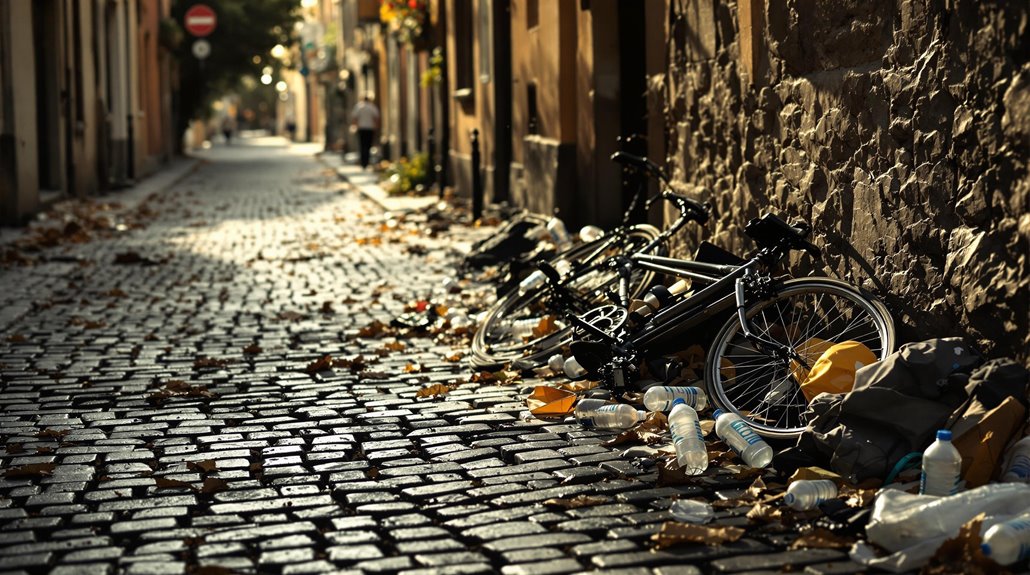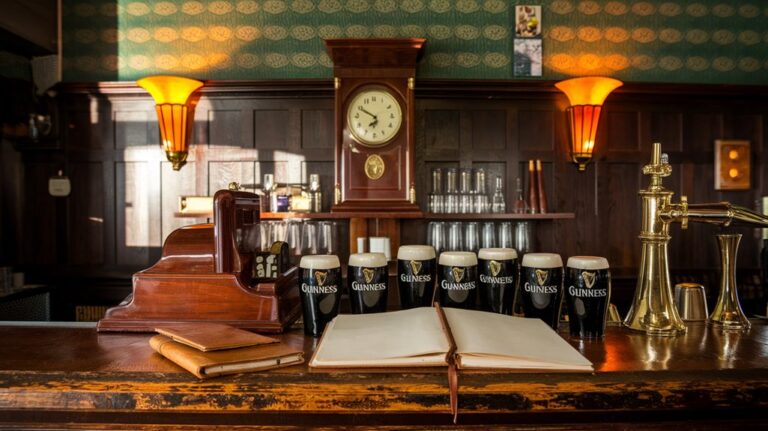Tour De France Scandal: the Affair That Created It
In 1998, a single suitcase containing over 400 vials of performance-enhancing drugs would change professional cycling forever. You've probably heard of Lance Armstrong's downfall, but you might not know about the scandal that set the stage for modern cycling's battle with doping. The Festina Affair, as it's now known, didn't just expose one team's secrets—it ripped open the curtain on professional cycling's darkest practices, leading to confessions that would shake the sport to its core.
The Domino Effect: How Willy Voet's Arrest Exposed Cycling's Dark Side

While Willy Voet's arrest at the French-Belgian border in July 1998 initially seemed like a routine customs stop, it quickly triggered cycling's biggest doping scandal.
When authorities discovered EPO, steroids, growth hormones, and amphetamines in his Festina team car, you'd think the cycling world would've immediately erupted. But the bombshell was yet to come.
The subsequent raid on Festina's headquarters exposed a systematic doping culture that would change the sport forever. By December 2000, all nine riders had admitted to using performance-enhancing substances during their careers.
The revelations led to a massive investigation where Marco Pantani and other top riders tested positive for EPO use.
As investigators uncovered detailed documentation of the team's practices, the facade of athlete accountability crumbled.
What started with one arrest snowballed into widespread hotel raids, team expulsions, and a peloton in crisis.
Behind the Scenes: The Systematic Doping Program at Team Festina
The grim reality behind Festina's closed doors went far beyond Willy Voet's car full of drugs.
You'll find a sophisticated doping culture orchestrated by team manager Bruno Roussel and doctor Eric Rijckaert, who developed personalized drug regimens for each rider. They justified this systematic approach as "rational use" to protect athletes.
The program's scope was staggering. You're looking at an operation that smuggled EPO, steroids, and growth hormones across borders, maintained detailed medical records, and manipulated blood values to dodge detection. Such practices continued until mandatory testing began in 1966 after Tom Simpson's death during the Tour.
Team officials worked with pharmacists Christine and Eric Paranier to source illegal substances while portraying their medical supervision as a safer alternative to individual doping. The entire team was ultimately expelled from the Tour when the systematic drug use came to light.
The ethical implications were profound, as riders claimed sponsor pressure drove them to participate in this elaborate scheme.
From Denial to Truth: Key Players and Their Confessions
After years of steadfast denials, professional cycling's most prominent figures finally cracked under mounting evidence and public pressure.
The confession impact sent shockwaves through the sport, with Lance Armstrong's 2013 Oprah interview revealing that his seven Tour victories were built on systematic doping. In the early years of cycling, strychnine and cocaine were commonly administered to revive exhausted riders. The Festina team scandal in 1998 exposed an elaborate doping operation that rocked the cycling world.
Athlete accountability reached new heights as other champions followed suit.
Key admissions that transformed the sport:
- Bjarne Riis declared himself "not worthy" of his 1996 title
- George Hincapie's testimony dealt a significant blow to Armstrong's credibility
- Floyd Landis and Levi Leipheimer exposed the depth of cycling's doping culture
The wave of confessions revealed a startling truth: 56% of Tour winners from 1996 to 2020 were linked to doping, while 20 out of 21 podium finishers during Armstrong's era had used banned substances.
Breaking Point: the 1998 Tour De France Unravels
During cycling's darkest chapter, 1998's Tour de France imploded when French customs officials arrested Festina team soigneur Willy Voet at the Belgian border with a car full of performance-enhancing drugs.
What followed was unprecedented: police raids on team hotels, rider protests, and mass withdrawals that shrank the peloton from 189 to fewer than 100 cyclists.
You couldn't ignore the magnitude of the scandal as it unfolded. When Festina's manager Bruno Roussel admitted to organized doping, it triggered a cascade of revelations. The controversy sparked formation of the World Anti-Doping Agency.
Eight Festina riders tested positive for EPO, while searches of other teams uncovered more banned substances and masking agents. Among the confiscated items were significant quantities of EPO and amphetamines.
Public trust plummeted as the Tour's focus shifted from racing to doping. The crisis forced cycling to confront its demons, making Tour reform inevitable.
Legacy of the Festina Affair: Reshaping Modern Cycling

While 1998's Festina Affair shattered cycling's façade, its aftermath transformed the sport forever.
You'll find the legacy implications reached far beyond the immediate scandal, fundamentally reshaping professional cycling's doping culture and institutional framework. With only 96 riders completing the race, the unprecedented exodus demonstrated just how deeply the scandal affected cycling's premier event. Drug testing had come a long way since drug tests were introduced in 1965.
The affair's ripple effects created lasting changes you can still see today:
- The creation of WADA and stricter anti-doping measures transformed how the sport handles performance enhancement
- More than one-third of top Tour finishers between 1998-2013 were later linked to doping, revealing the depth of the problem
- Public trust shifted dramatically, with every exceptional performance now facing intense scrutiny
The scandal's impact permanently altered cycling's landscape, leading to unprecedented transparency requirements and a complete overhaul of how teams, organizers, and governing bodies approach anti-doping efforts.










